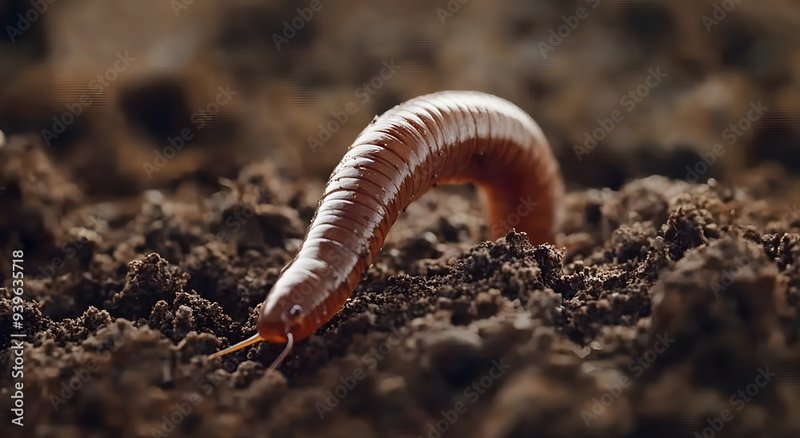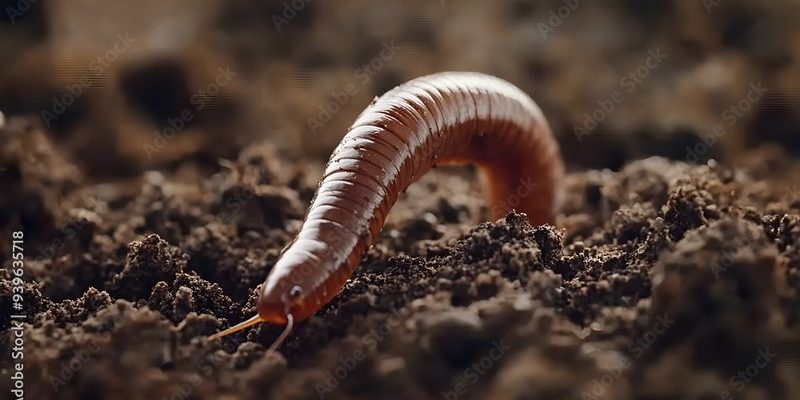
You might picture a garden with vibrant flowers, lush vegetables, and beautiful trees, all thriving in rich, dark soil. But the truth is, that soil isn’t just dirt; it’s a bustling ecosystem. Earthworms help aerate this soil, creating spaces for air and water to flow. If you’re curious about how these simple creatures make such a big impact, grab a cup of coffee, and let’s explore their fascinating role in soil aeration together.
Why Soil Aeration Matters
Before we dive into the details about earthworms, let’s talk about why soil aeration is so important. Soil aeration refers to the process of air moving into and through the soil. Just like we need oxygen to breathe, plants need it too! When soil becomes compacted, it restricts the flow of air and water. This can lead to poor growth, root rot, and even plant death.
Think of compacted soil like a crowded subway during rush hour—everyone is packed in so tightly that nobody can move freely. A healthy soil structure allows roots to spread out, access nutrients, and take in water more effectively. This leads to stronger plants and, in turn, a more vibrant ecosystem overall.
Soil aeration can also improve drainage. If water can’t flow through the soil properly, it can pool and drown plants. This is where **earthworms** come into play!
How Earthworms Aerate Soil
Earthworms have a unique way of enhancing soil structure. As they travel through the soil, they create tiny tunnels. These tunnels serve as channels for air and water to move in and out of the soil. Picture them as small highways, allowing essential resources to flow freely where they’re needed most.
As earthworms consume organic material, like dead leaves and decaying plants, they break it down into nutrient-rich soil known as **castings**. These castings are super beneficial because they improve the soil structure and provide nutrients for plants. The act of burrowing not only aerates the soil but also helps mix these nutrients evenly, ensuring that everything gets distributed properly.
Here’s the thing: without earthworms, many soils would become compacted and lifeless. They are truly the unsung heroes of the garden!
The Life Cycle of an Earthworm
You might be wondering about how earthworms live and reproduce. Earthworms can thrive in various environments, but they prefer damp, dark places where they can find plenty of organic matter to munch on. They are hermaphrodites, meaning they have both male and female reproductive organs. This allows them to mate with any partner they encounter.
After mating, earthworms lay eggs in small cocoons in the soil. These eggs hatch into baby earthworms, which will grow and continue the cycle. It’s fascinating to think that each earthworm can produce dozens of new worms each year!
Interestingly, their lifespan can range from 4 to 8 years in healthy soil conditions. That’s a good chunk of time for them to keep aerating and enriching the soil!
Earthworms vs. Other Soil Aerators
While earthworms are excellent at aerating soil, they aren’t the only ones doing this important work. Other creatures, like certain insects, moles, and even plant roots, contribute to soil aeration too. So, how do they compare?
- Earthworms: They create permanent tunnels and improve nutrient cycling.
- Insects: Soil-dwelling insects, like beetles, also burrow, but their tunnels are often less consistent.
- Moles: While moles aerate the soil effectively, their digging can be more disruptive to the soil structure.
- Plant roots: They naturally create channels in the soil, but they don’t move nutrients or organic matter as efficiently.
Ultimately, earthworms are unique in that they not only aerate the soil but also enrich it through their feeding and digestion processes. They truly stand out in the realm of soil aerators!
How to Encourage Earthworms in Your Garden
If you’d like to see more earthworms in your garden, there are several simple steps you can take to attract them. Here’s how to create a worm-friendly environment:
1. **Add Organic Matter:** Compost, leaf litter, and decomposing plants are like a buffet for earthworms. The more organic matter you have, the happier they’ll be!
2. **Avoid Chemicals:** Pesticides and chemical fertilizers can harm earthworms. Opt for organic gardening methods to keep your soil healthy.
3. **Keep Soil Moist:** Earthworms love moisture. Water your garden regularly, especially during dry spells, to keep the soil damp but not soggy.
4. **Aerate Manually:** If your soil is compacted, consider using a garden fork to aerate it before letting earthworms do their thing. This can help them move in more easily.
By creating a welcoming habitat, you’ll be well on your way to having a thriving garden full of these remarkable creatures!
The Bottom Line
Earthworms might be small, but they have a massive impact on soil health and aeration. Their burrowing activities help improve air and water circulation, making it easier for plants to thrive. By understanding their role, we can appreciate these little creatures even more and take steps to ensure their presence in our gardens.
So next time you see an earthworm, remember that it’s not just a squiggly worm in the dirt. It’s a key player in the dance of life happening right beneath our feet. Let’s do our part to protect these hardworking helpers, and in return, they’ll help us grow healthy, beautiful plants!

